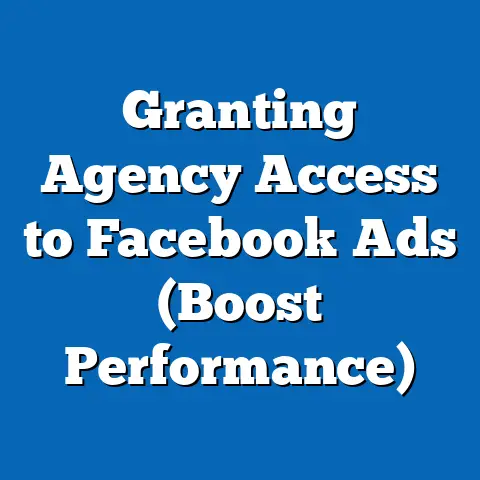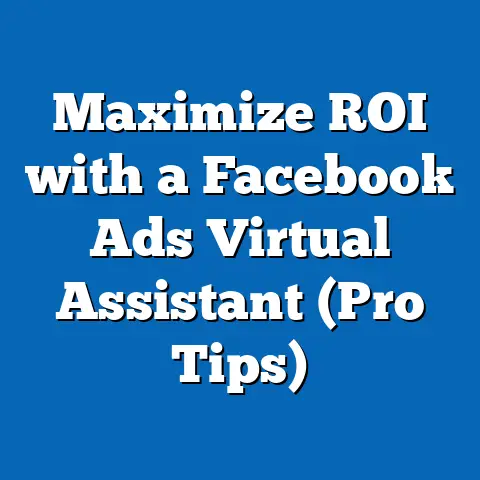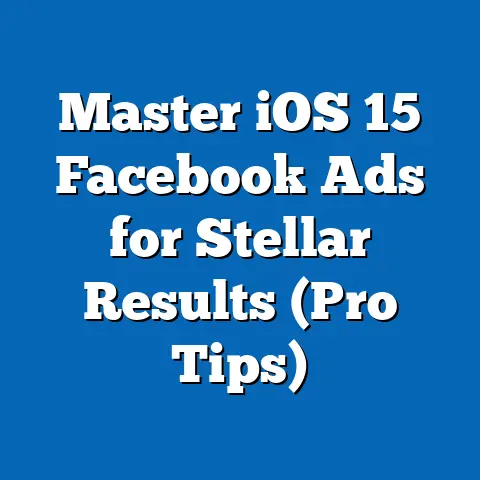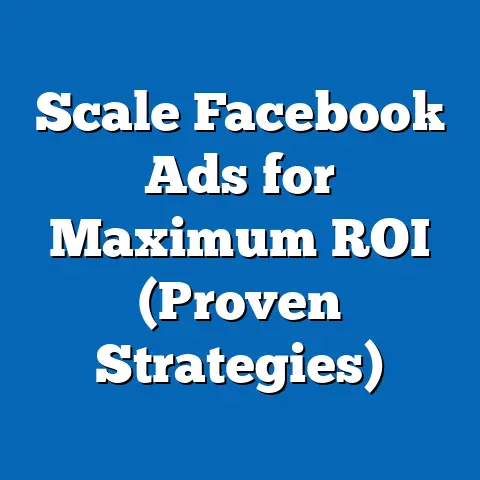Unlock Facebook Ads CPC & CPM Secrets (Expert Insights)
Would you rather spend $100 on Facebook ads and get 10 clicks, or spend the same amount and achieve 100 clicks with the right strategies? I know what I’d choose! The difference lies in understanding and optimizing your Cost Per Click (CPC) and Cost Per Mille (CPM). These metrics are the heartbeat of your Facebook advertising campaign, and mastering them can significantly impact your ad performance and overall marketing budget.
I’ve spent years diving deep into the world of Facebook Ads, and I’ve seen firsthand how a solid grasp of CPC and CPM can transform a struggling campaign into a roaring success. I remember one particular client, a local bakery, who was throwing money at Facebook ads with little to show for it. Their CPC was sky-high, and they were ready to give up. But after we dissected their targeting, refined their ad copy, and implemented some A/B testing, we slashed their CPC by 60% and saw a huge surge in online orders. That’s the power of understanding these metrics!
In this guide, I’m going to pull back the curtain and share my expert insights on CPC and CPM, empowering you to unlock the full potential of your Facebook advertising efforts.
Understanding the Basics of CPC and CPM
Let’s start with the fundamentals. What exactly are CPC and CPM, and why should you care?
What is Cost Per Click (CPC)?
Cost Per Click (CPC) is the amount you pay each time someone clicks on your Facebook ad. It’s a direct measure of how much it costs to drive traffic to your website, landing page, or app. Think of it as the price you pay for each potential customer who shows enough interest in your ad to take that next step.
What is Cost Per Mille (CPM)?
Cost Per Mille (CPM), also known as Cost Per Thousand, is the amount you pay for every 1,000 impressions your ad receives. An impression is simply when your ad is shown to someone, regardless of whether they click on it or not. CPM is a measure of how much it costs to get your ad seen by a large audience.
Why Are These Metrics Important?
Understanding CPC and CPM is crucial for several reasons:
- Budgeting: These metrics help you estimate how much you need to spend to achieve your advertising goals, whether it’s driving traffic, generating leads, or increasing sales.
- ROI: By tracking CPC and CPM, you can measure the return on your investment and identify areas where you can improve your ad performance.
- Optimization: These metrics provide valuable insights into the effectiveness of your ad targeting, creative design, and bidding strategies.
Real-World Examples
Let’s look at a couple of simple examples:
- Example 1: CPC You run a Facebook ad campaign to promote a new product. Your CPC is $0.50. This means that every time someone clicks on your ad, you pay $0.50. If you get 100 clicks, you’ll spend $50.
- Example 2: CPM You run a Facebook ad campaign to increase brand awareness. Your CPM is $5.00. This means that for every 1,000 impressions your ad receives, you pay $5.00. If your ad is shown 10,000 times, you’ll spend $50.
Takeaway: CPC and CPM are fundamental metrics that provide valuable insights into the cost and effectiveness of your Facebook advertising campaigns.
The Importance of CPC and CPM in Ad Campaigns
Now that we understand the basics, let’s delve deeper into why these metrics are so important for your overall ad campaign success.
Budgeting and ROI
CPC and CPM are the cornerstones of effective budgeting and maximizing your return on investment (ROI).
- Budgeting: By knowing your average CPC and CPM, you can accurately predict how much you’ll need to spend to reach your desired audience and achieve your campaign goals. For example, if you want to drive 1,000 clicks to your website and your average CPC is $0.75, you can estimate that you’ll need a budget of $750.
- ROI: Tracking CPC and CPM allows you to measure the profitability of your ad campaigns. If your CPC is too high, you might be spending too much to acquire customers, impacting your overall ROI. Similarly, if your CPM is low but your click-through rate (CTR) is also low, it could indicate that your ad creative isn’t resonating with your audience.
Influencing Ad Strategy
CPC and CPM influence your ad strategy in several ways:
- Targeting: High CPC or CPM can indicate that you’re targeting the wrong audience. Refining your targeting criteria can help you reach a more relevant audience and lower your costs.
- Creative Design: A low CTR combined with a low CPM might suggest that your ad creative isn’t engaging enough. Experimenting with different visuals, headlines, and ad copy can help you improve your CTR and overall ad performance.
- Bidding Strategy: Facebook offers various bidding strategies, such as lowest cost, cost cap, and target cost. Understanding your CPC and CPM goals can help you choose the right bidding strategy to maximize your ROI.
Case Studies: Real-World Impact
Let’s look at a few case studies to illustrate the importance of CPC and CPM:
- Case Study 1: E-commerce Store: An e-commerce store selling handmade jewelry was struggling with high CPCs. After analyzing their data, they realized that their targeting was too broad. By narrowing their audience to specific interests and demographics, they reduced their CPC by 40% and increased their sales by 25%.
- Case Study 2: Lead Generation: A real estate company was running lead generation ads with a low CPM but also a low conversion rate. They A/B tested different ad creatives and found that using high-quality images of luxury homes significantly improved their conversion rate, resulting in a higher ROI.
- Case Study 3: App Install Campaign: A mobile app developer was running an app install campaign with a high CPM. They realized that their ads were being shown to users who weren’t interested in their app. By excluding certain demographics and interests, they reduced their CPM by 30% and increased their app installs by 15%.
Takeaway: CPC and CPM are essential for budgeting, maximizing ROI, and influencing your ad strategy. By understanding these metrics and their impact on your campaigns, you can make data-driven decisions to improve your ad performance.
Key Factors Affecting CPC and CPM
Now, let’s dive into the nitty-gritty and explore the key factors that can influence your CPC and CPM. Understanding these factors is crucial for optimizing your campaigns and achieving your desired results.
Audience Targeting
Your audience targeting is one of the most significant factors affecting your CPC and CPM.
- Demographics: Targeting specific demographics, such as age, gender, location, and education level, can significantly impact your costs. For example, targeting a highly competitive demographic, like young adults in major cities, might result in higher CPCs and CPMs.
- Interests: Targeting users based on their interests can also affect your costs. Targeting broad interests might result in lower CPCs but also lower conversion rates. Targeting niche interests can lead to higher CPCs but also higher conversion rates.
- Behaviors: Targeting users based on their online behaviors, such as purchase history, website visits, and app usage, can be highly effective but also more expensive. For example, targeting users who have recently purchased a similar product to yours might result in higher CPCs but also a higher likelihood of conversion.
Ad Relevance and Quality Scores
Facebook assigns a quality score to your ads based on their relevance to your target audience. This score can significantly impact your CPC and CPM.
- Ad Relevance: Facebook measures ad relevance based on how well your ad matches the interests and needs of your target audience. A high relevance score indicates that your ad is resonating with your audience, resulting in lower CPCs and CPMs.
- Quality Score: Facebook also considers the overall quality of your ad, including the quality of your visuals, the clarity of your ad copy, and the user experience on your landing page. A high-quality score can also lead to lower CPCs and CPMs.
Competition Within the Ad Auction
Facebook’s ad auction is a dynamic marketplace where advertisers compete for ad placements. The level of competition can significantly impact your CPC and CPM.
- High Competition: When many advertisers are targeting the same audience, the competition increases, driving up CPCs and CPMs.
- Low Competition: When there’s less competition, you can often achieve lower CPCs and CPMs.
Time of Day and Seasonal Trends
The time of day and seasonal trends can also affect your CPC and CPM.
- Time of Day: Certain times of day might be more competitive than others. For example, CPCs might be higher during peak hours when more people are online.
- Seasonal Trends: Seasonal events, such as holidays and Black Friday, can also drive up CPCs and CPMs due to increased competition.
Expert Insight: I’ve found that monitoring CPC and CPM fluctuations throughout the day and week can reveal valuable insights. For example, I once discovered that my clients’ ads performed best (lowest CPC) on Tuesday evenings. This allowed us to adjust our bidding strategy and maximize our budget.
Takeaway: Understanding the factors that influence CPC and CPM is crucial for optimizing your Facebook ad campaigns. By carefully considering your audience targeting, ad relevance, competition, and time of day, you can reduce your costs and improve your ROI.
Refining Audience Targeting
- Leverage Facebook’s Audience Insights Tool: This powerful tool allows you to analyze your existing audience and identify new targeting opportunities. You can discover their interests, demographics, and behaviors, helping you refine your targeting criteria.
- Create Custom Audiences: Upload your customer list or website visitor data to create custom audiences. This allows you to target users who have already shown interest in your products or services, resulting in higher conversion rates and lower CPCs.
- Use Lookalike Audiences: Expand your reach by creating lookalike audiences based on your custom audiences. Facebook will identify users who share similar characteristics with your existing customers, helping you reach a highly relevant audience.
- Exclude Irrelevant Audiences: Don’t be afraid to exclude certain demographics or interests that are unlikely to convert. This can help you reduce your costs and improve your overall ROI.
A/B Testing Ad Creatives
- Experiment with Visuals: Test different images, videos, and carousel formats to see what resonates best with your audience. Use high-quality visuals that are relevant to your products or services.
- Craft Compelling Ad Copy: Write clear, concise, and engaging ad copy that highlights the benefits of your products or services. Use strong calls to action that encourage users to click on your ad.
- Test Different Headlines: Experiment with different headlines to see which ones grab the most attention. Use keywords that are relevant to your target audience.
- A/B Test Different Ad Formats: Facebook offers various ad formats, such as single image ads, video ads, carousel ads, and collection ads. Test different formats to see which ones perform best for your campaign goals.
Optimizing Ad Placements
- Understand Where Your Ads Perform Best: Facebook offers various ad placements, such as Facebook Feed, Instagram Feed, Audience Network, and Messenger. Analyze your data to see which placements are driving the best results for your campaign.
- Customize Your Placements: Don’t be afraid to customize your placements based on your campaign goals and target audience. For example, if you’re targeting a younger audience, you might focus on Instagram Feed and Stories.
- Exclude Underperforming Placements: If certain placements are consistently underperforming, exclude them from your campaign to reduce your costs.
Leveraging Retargeting
- Retarget Website Visitors: Target users who have visited your website but haven’t yet converted. This can be a highly effective way to drive sales and generate leads.
- Retarget Engaged Users: Target users who have interacted with your Facebook page, such as liking your posts, watching your videos, or clicking on your ads. This can help you build brand awareness and drive engagement.
- Retarget Abandoned Cart Users: Target users who have added items to their cart but haven’t completed their purchase. This can be a great way to recover lost sales.
Real-World Example: I worked with a clothing retailer who was struggling to convert website visitors into paying customers. We implemented a retargeting campaign that targeted users who had viewed specific product pages but hadn’t added anything to their cart. The ads featured the exact products they had viewed, along with a special discount code. This resulted in a 30% increase in sales and a significant reduction in their CPC.
Takeaway: Optimizing your CPC and CPM requires a combination of strategic targeting, compelling ad creatives, effective ad placements, and smart retargeting. By implementing these strategies, you can reduce your costs and improve your overall ad performance.
Tools and Resources for Tracking CPC and CPM
Tracking your CPC and CPM is essential for understanding your ad performance and making data-driven decisions. Fortunately, Facebook provides a wealth of tools and resources to help you monitor these metrics effectively.
Facebook Ads Manager
Facebook Ads Manager is your central hub for managing and tracking your ad campaigns. It provides a comprehensive overview of your ad performance, including CPC, CPM, click-through rate (CTR), conversion rate, and return on ad spend (ROAS).
- Customizable Reports: Ads Manager allows you to create customizable reports that focus on the metrics that are most important to you. You can track CPC, CPM, and other key metrics over time to identify trends and patterns.
- Real-Time Data: Ads Manager provides real-time data, allowing you to monitor your ad performance and make adjustments as needed.
- Breakdowns: Ads Manager allows you to break down your data by various dimensions, such as age, gender, location, placement, and device. This can help you identify which segments of your audience are performing best and optimize your targeting accordingly.
Facebook Analytics
Facebook Analytics is a powerful tool that allows you to track user behavior on your website and app. By integrating Facebook Pixel with your website, you can track conversions, website traffic, and other key metrics.
- Conversion Tracking: Facebook Analytics allows you to track conversions, such as purchases, leads, and sign-ups. This can help you measure the effectiveness of your ad campaigns in driving real business results.
- Website Traffic Analysis: Facebook Analytics provides insights into your website traffic, including the number of visitors, the pages they visit, and the time they spend on your site. This can help you understand how users are interacting with your website and identify areas for improvement.
- Attribution Modeling: Facebook Analytics allows you to attribute conversions to specific ad campaigns, helping you understand which ads are driving the most value.
Third-Party Tools
In addition to Facebook’s built-in tools, there are also a variety of third-party tools that can help you track and analyze your CPC and CPM.
- Google Analytics: Google Analytics is a free web analytics tool that provides insights into your website traffic and user behavior. By integrating Google Analytics with your Facebook ad campaigns, you can track the performance of your ads in driving website traffic and conversions.
- AdEspresso: AdEspresso is a paid tool that helps you manage and optimize your Facebook ad campaigns. It provides features such as A/B testing, automated optimization, and reporting.
- Hootsuite Ads: Hootsuite Ads is a paid tool that allows you to manage your social media advertising campaigns across multiple platforms, including Facebook, Instagram, and Twitter.
Takeaway: Tracking your CPC and CPM is essential for understanding your ad performance and making data-driven decisions. Facebook Ads Manager, Facebook Analytics, and various third-party tools provide a wealth of resources to help you monitor these metrics effectively.
Future Trends in Facebook Ads CPC and CPM
The world of Facebook advertising is constantly evolving, and it’s important to stay ahead of the curve to maintain a competitive edge. Let’s take a look at some emerging trends that are likely to impact CPC and CPM in the future.
Impact of Privacy Changes
Recent privacy changes, such as Apple’s App Tracking Transparency (ATT), have made it more difficult to track users across apps and websites. This has had a significant impact on Facebook advertising, leading to higher CPCs and CPMs for some advertisers.
- Limited Data: ATT has limited the amount of data that Facebook can collect about users, making it more difficult to target ads effectively.
- Increased Competition: As targeting becomes more challenging, advertisers are competing for a smaller pool of users, driving up CPCs and CPMs.
The Rise of AI and Machine Learning
Artificial intelligence (AI) and machine learning are playing an increasingly important role in Facebook advertising. These technologies can help you optimize your campaigns, improve your targeting, and reduce your costs.
- Automated Bidding: AI-powered bidding strategies can automatically adjust your bids based on real-time data, helping you maximize your ROI.
- Improved Targeting: AI can analyze vast amounts of data to identify patterns and insights that can help you target your ads more effectively.
- Personalized Ad Creatives: AI can generate personalized ad creatives that are tailored to individual users, improving engagement and conversion rates.
The Metaverse and Virtual Advertising
As the metaverse continues to develop, new opportunities for virtual advertising are emerging. These opportunities could potentially disrupt the traditional Facebook advertising landscape.
- Immersive Experiences: The metaverse offers immersive advertising experiences that can be highly engaging and memorable.
- New Ad Formats: New ad formats, such as virtual billboards and sponsored avatars, are emerging in the metaverse.
- Untapped Audiences: The metaverse offers access to new audiences that are not yet saturated with traditional advertising.
Expert Prediction: I believe that AI and machine learning will become even more critical for Facebook advertisers in the future. Advertisers who embrace these technologies will be able to optimize their campaigns more effectively and achieve better results.
Takeaway: Staying informed about emerging trends is essential for success in Facebook advertising. By understanding the impact of privacy changes, the rise of AI, and the emergence of the metaverse, you can adapt your strategies and maintain a competitive edge.
Understanding CPC and CPM is crucial for maximizing the effectiveness of your Facebook ad campaigns. By carefully considering your audience targeting, ad relevance, competition, and bidding strategies, you can reduce your costs and improve your ROI.
Remember, Facebook advertising is a dynamic and ever-evolving landscape. It’s important to stay informed about emerging trends and adapt your strategies accordingly. By embracing new technologies and experimenting with different approaches, you can unlock the full potential of Facebook advertising and achieve your business goals.
Call to Action
Now it’s your turn! I’d love to hear about your experiences with Facebook ads. What are your biggest challenges when it comes to CPC and CPM? What strategies have you found to be most effective? Share your thoughts and questions in the comments below. And if you’re looking for further guidance on optimizing your Facebook ad campaigns, don’t hesitate to reach out! Let’s work together to unlock your advertising potential!






